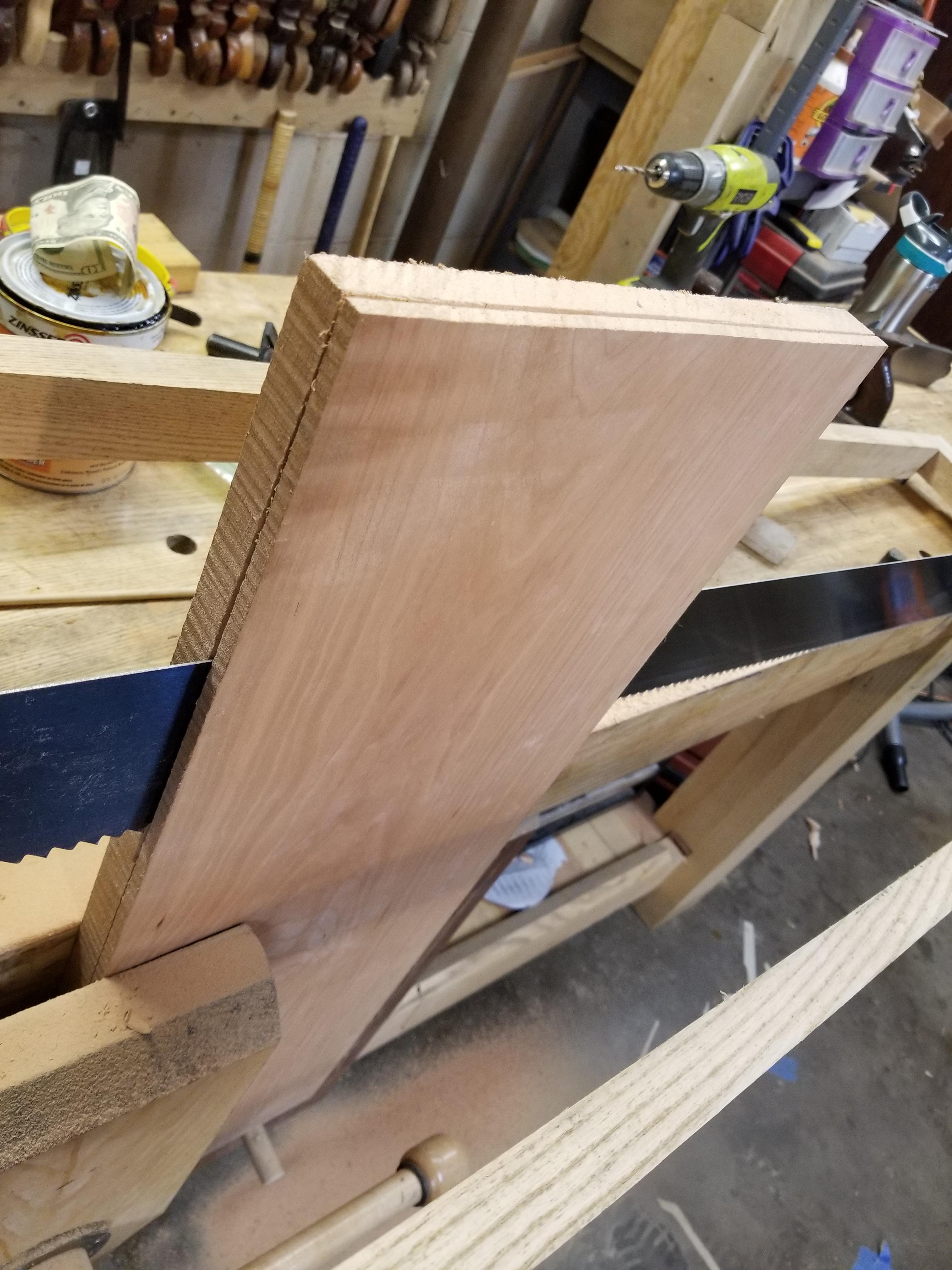There's no shortage of fine furniture in the older areas of the united states if one wants to make fine furniture. I generally make tools. I count 16 pieces of case work or cabinetry in my house that I've made, and a laddered bed. And 8 guitars (and probably more than 100 tools). That's enough for me for the furniture, though the jones to make things out of wood will probably change that.
The difference between you and me is I'll make something like this in a style that I don't really love, and squeeze out of it what I can. If someone asks me how to dimension the wood by hand, i can tell them precisely how to learn to do it. You will show a pine test piece.
If someone wants to ditch their bandsaw but still saw wide panels or guitar tops.
I can tell them exactly how to do it, and I can tell them how to make the saw out of shim stock and wood. You'll show a test cut with an old hand saw in a way that would get anyone to think it's too hard to do.
I'll show a case in process (even though it's not my favorite thing to make) joined top and bottom with dovetails and dovetailed shelves with hand planed T&G back installed later, and mouldings and base made entirely by hand (there was very little on this case that wasn't done by hand. I got in a rush on the top half and did skip about 20% of the wood through a thickness planer, I can't remember why - I probably wouldn't do it again as much of the other stuff that I've made is 100% solid from rough lumber with no power tools at all).
I've got pictures of the remnants of doing the work:
You talk about planes and show windows.
You haven't got the actual experience doing anything that you talk about. And I'm just a hobbyist. It should tell you something. If I thought you had a chance of having had enough detail go through your nerves to know the difference, I wouldn't be so rough on your suggestions, but you give terrible advice. That's all there is to it. Your advice leaves people thinking that closer work will be difficult to do, or that this stuff isn't easy by hand. If the planes are set and prepared properly, it's just exercise no matter what any reasonable wood or level of figure is. The resawing, just exercise. But with shoddy tools and ignorance of how they work, it could seem quite difficult.






